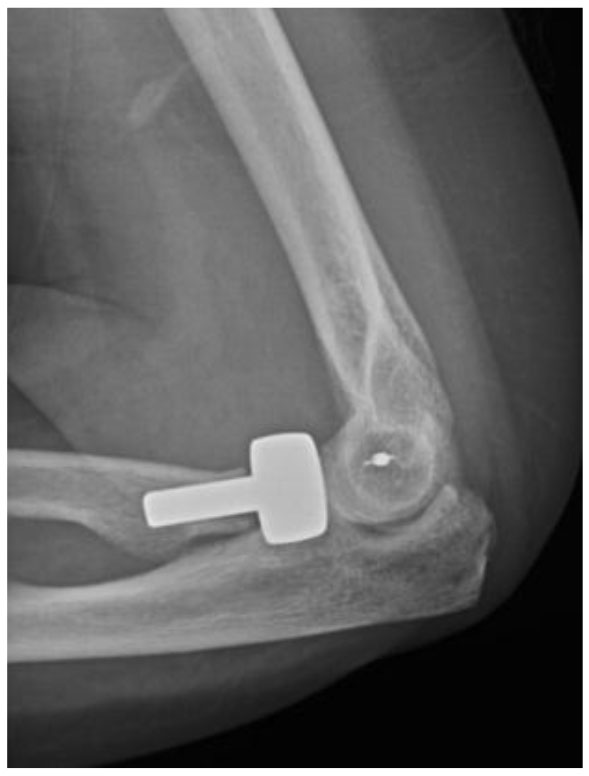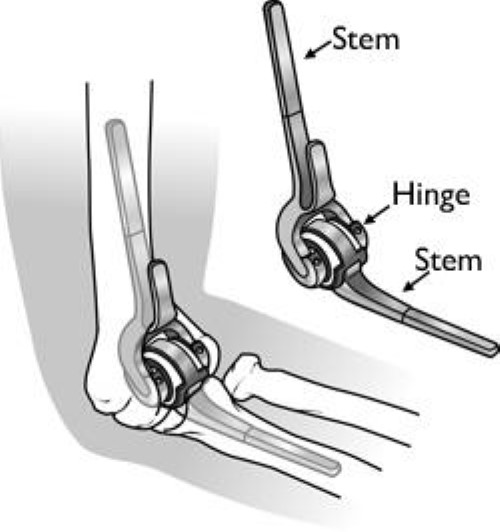Although elbow joint replacement is much less common than knee or hip replacement, it is just as successful in relieving joint pain and returning people to activities they enjoy.
In elbow replacement surgery, the damaged parts of the humerus and ulna are replaced with artificial components.
Indications:
Painful arthritic elbow.
Types of Elbow replacement:
There are total and partial elbow replacements, which may be used in very specific situations. For example, if only the head of one of your forearm bones(radius) is damaged, partial elbow replacement can be done. 
If the entire joint is damaged then total elbow replacement should be done.

Total Elbow Replacement components
Anesthesia:
Elbow replacement can be carried out under general anesthesia.
Implant components:




Recovery:
You will be taught some exercises for your hand and wrist to avoid stiffness and help to control swelling. You will do gentle elbow range of motion exercises as the incision heals.
You will most likely not be allowed to put any weight on your arm or push against resistance with your hand until about 6 weeks after your surgery.